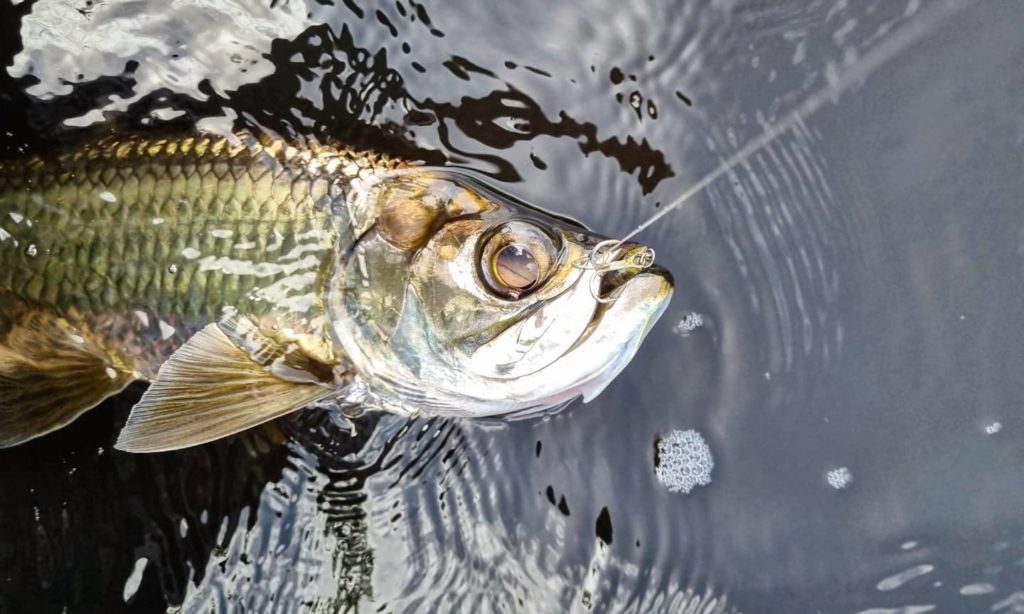
Passionate about tarpon for years, we wanted to share with you 5 noteworthy and little-known facts about this mythical fish.
Tarpon larvae look like worms
Adult tarpon spawn offshore: 80-100 miles in the Gulf of Mexico and 5-10 miles in the Atlantic Ocean. Once the eggs have been fertilised and hatched, the tarpon begins its larval stage. It then resembles a transparent flatworm.

This particular larva, similar to eels, bonefish, and ladyfish, is known as the leptocephalus. Although leptocephali have the ability to swim, they mainly drift with currents to return to the coasts.
Studies show that tarpon larvae enter the fishways at night and make their way to the edge of the estuary to find calm pools where they metamorphose into juveniles.
The tarpon is a fish that can breathe in the open air
Tarpon have the unique ability to take oxygen from above the surface rather than relying on dissolved oxygen in the water.
The tarpon has a modified swim bladder with rows of vascularised (i.e. spongy) tissue that can act as an additional set of gills.

Swallowing air is a major advantage for young tarpon, which seem to prefer habitats with low dissolved oxygen content that exclude other fish that could be in competition with them or even predators.
Juvenile tarpon eat anything and everything
Juvenile tarpon are primarily opportunistic feeders. Studies show that the only limiting factor for the tarpon is the size of its mouth. As a result, the larger the tarpon grows, the more prey it is able to eat, regardless of species.

The tarpon thus feeds mainly on fish and copepods. But it also feeds on ants, crabs, shrimps and even fly larvae.
Tarpon growth rate depends on habitat quality
Although the scientific literature is limited, some studies show that tarpons in captivity or in natural habitats exhibit growth rates of 25 to 20 cm per year.

However, studies carried out in south-west Florida and on the South Carolina coast on juvenile tarpon have revealed average growth rates of 2 to 5 cm per year in habitats degraded by man.
These studies highlight the extent to which coastal development, changes in water flow and nutrient run-off are having a detrimental effect on this fish.
2/3 of juvenile tarpon habitats are degraded by humans
Clearly, habitat protection and restoration are crucial to the preservation of the species. The tarpon has adapted magnificently to a very hostile environment, and has done so for thousands of years.
In order for this magnificent fish to last and for us to take advantage of this formidable adversary, it is our duty as a fisherman to preserve its habitat.

Useful links to learn more about tarpon:
Discover the fishing trip offers in Guadeloupe to go tarpon fishing:

Kayak fishing in Guadeloupe
Come and discover in my company kayak fishing in Guadeloupe and the extraordinary sensations one can experience there! With a pedal kayak, you can fish anywhere and discreetly without the inconvenience of paddling. With kayak fishing in Guadeloupe, you will discover fishing from a new angle.




